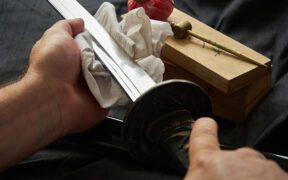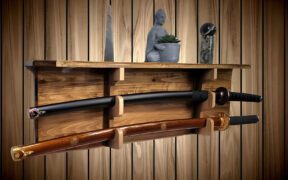How To Use a Katana like a Real Samurai
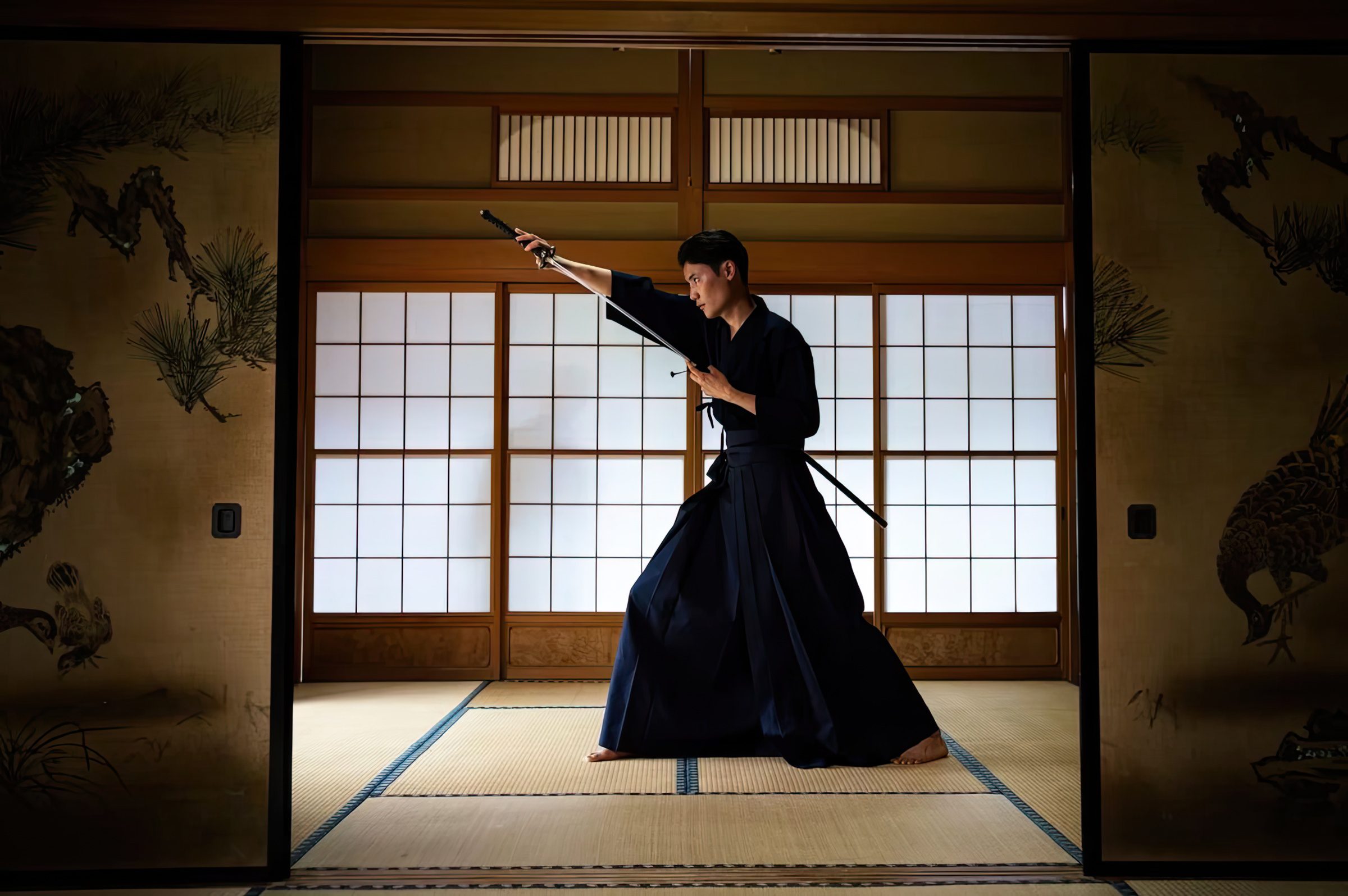
Thanks to the expertise of Japanese sword making, the Katana today is the most popular sword out of all the sword types worldwide. It evolved from the previous Tachi curved blades and quickly rose as the standard of the Samurai code.
Because of its current popularity, it has gotten the attention of many beginners and experienced sword enthusiasts. If you are one of them, you are in the right place. In this guide, we will help you understand everything there is to know about learning how to use the Katana like a real Samurai.
Things To Know Before using a Katana
The Katana, one of the most popular swords today, is a traditional Japanese longsword with a single-edged, curved blade known for its exceptional sharpness and cutting power. It is commonly linked with the Samurais, who used it as their weapon of choice in battle, making it one of the most recognizable swords in Japanese culture.
Although its status has been almost mythologized as the world’s strongest sword that could cut through anything, it still functions as a regular sword. If you plan to use one, there are a couple of things to consider.
- Material – wooden and aluminum alloy for training or types of steel for slashing.
- Length – The Katana length affects the weight, handling, and speed. Usually, the most common length for a Katana is around 39 inches (100 cm) long.
- Katana Parts – To fully understand how the Katana works, you should look familiarize yourself with the parts that make it. Although the cutting-edge blade might seem to be the most important, it would only be useful with a quality Katana handle or sheath.
- Sharpness – If you want to test the cutting technique of the Katana made by a real Japanese swordsmith with little to no impurities, you need proper Katana sharpening methods.
Equipping the Katana
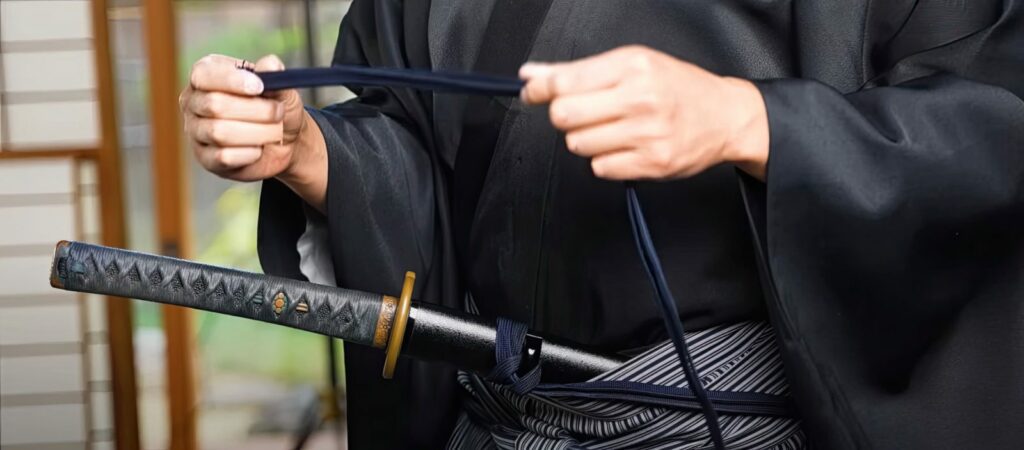
If you are wearing a traditional Japanese Kimono robe or any type of belt, you first place the end of the scabbard from the center of your stomach and let it fall with a little pressure through the belt.
If you have a Wakizashi or Tanto, the second or third sword worn by the Samurai indoors, you would place them inside the belt first and then under the Katana.
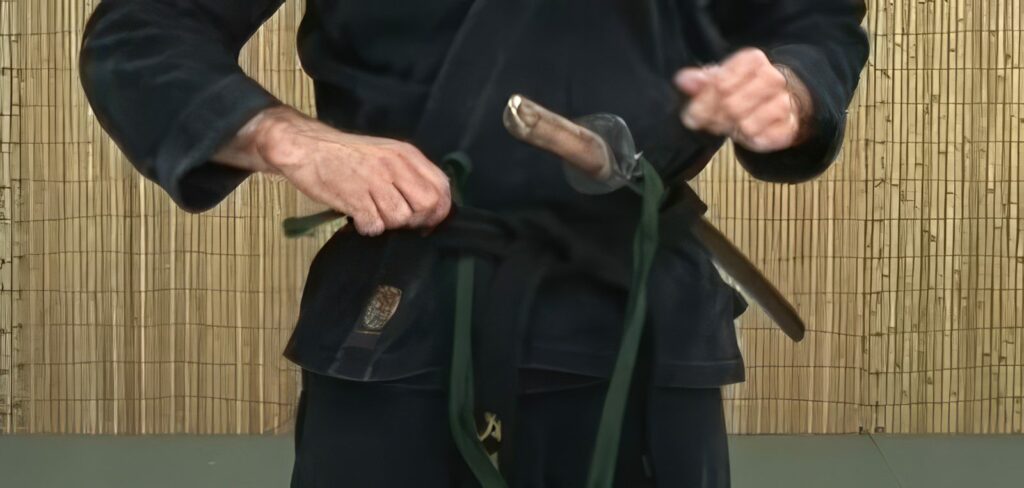
You would then take the Sageo string, or the cord with the sheath, and tie the Katana firmly on your Hakama or belt. This will hold it rigidly if it falls. However, it shouldn’t be tied so tightly that a simple movement could cause the string and Katana to loosen. It is handy, although the real Samurai may not have used these strings.
Wearing the Katana
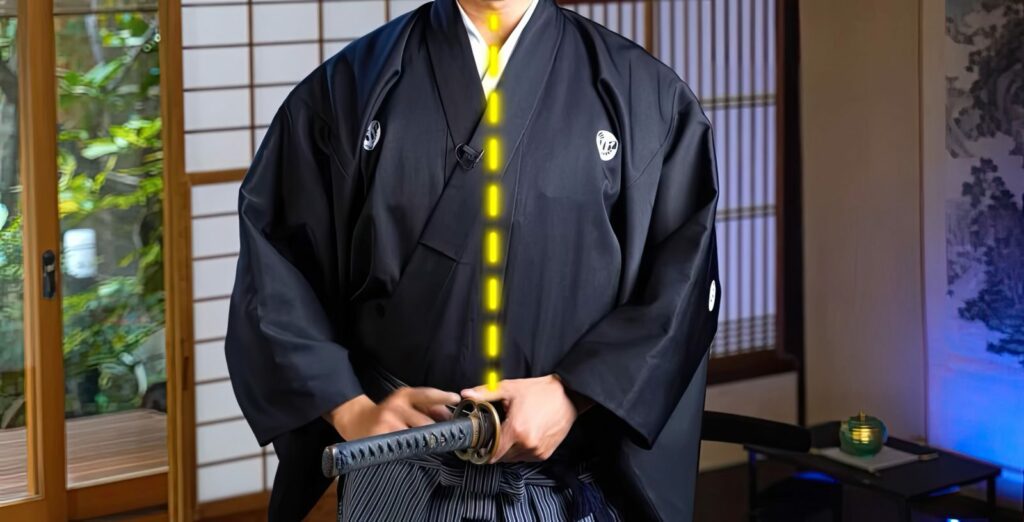
The Katana is always worn around while sheathed inside its scabbard, or Saya. The edge of the blade, or the sharpened part of the Katana, should always be facing up. The sword should be diagonal, where the guard comes directly in the center of your body.
One’s left hand plays a very important role when wearing the Katana. You should place this hand on top of the hand guard, or tsuba, and hold it with your thumb on the side. Refrain from holding it in the middle, as you can easily cut yourself when unsheathing it. Keep your thumb on the guard while using it; otherwise, the blade will fall off its scabbard.
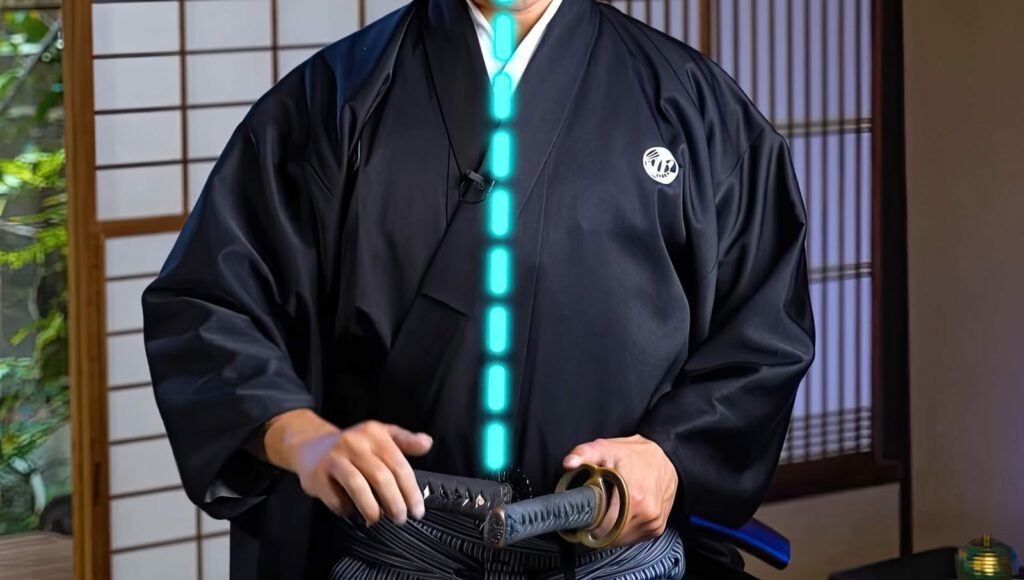
If you have a Wakizashi, the guard should be in the center of your body. But this time, the Katana’s handle or tsuka, and its pommel, or kashira, will be at the center.
The traditional Japanese Samurai way to carry the Katana is on your left side. This resulted from swords being hit together if they were not on the same side, and it is now regulated by law.
Drawing
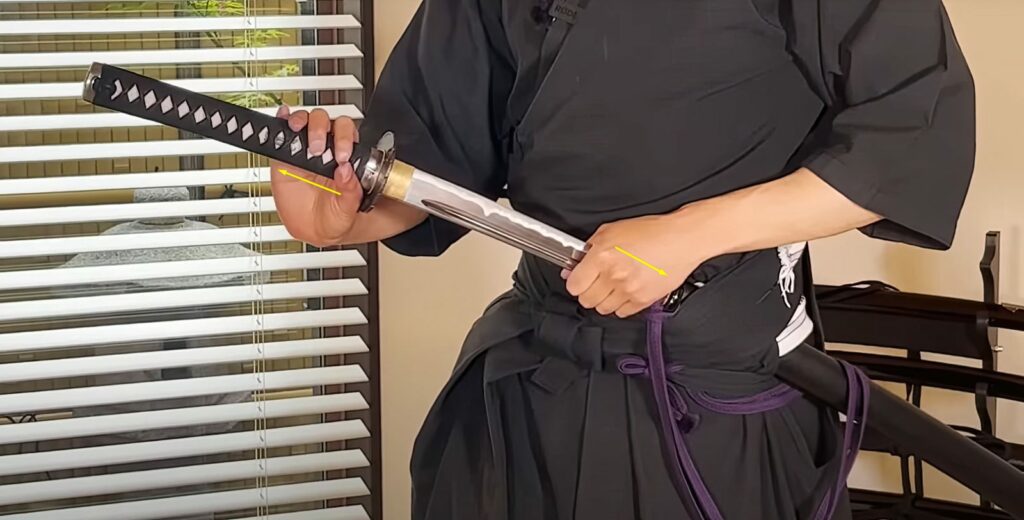
The easiest way to draw the Katana is to put your right foot slightly forward. You then move your right hand underneath the handle (tsuba) while your left hand holds the guard on the side. Now you start drawing on the handle out of the sheath with your right hand while at the same time pulling it back with your left.
Remember that your right hand should be under the handle. When releasing it, you should pull in an upward motion, stretching your body to the side for more leverage.
Holding a Katana
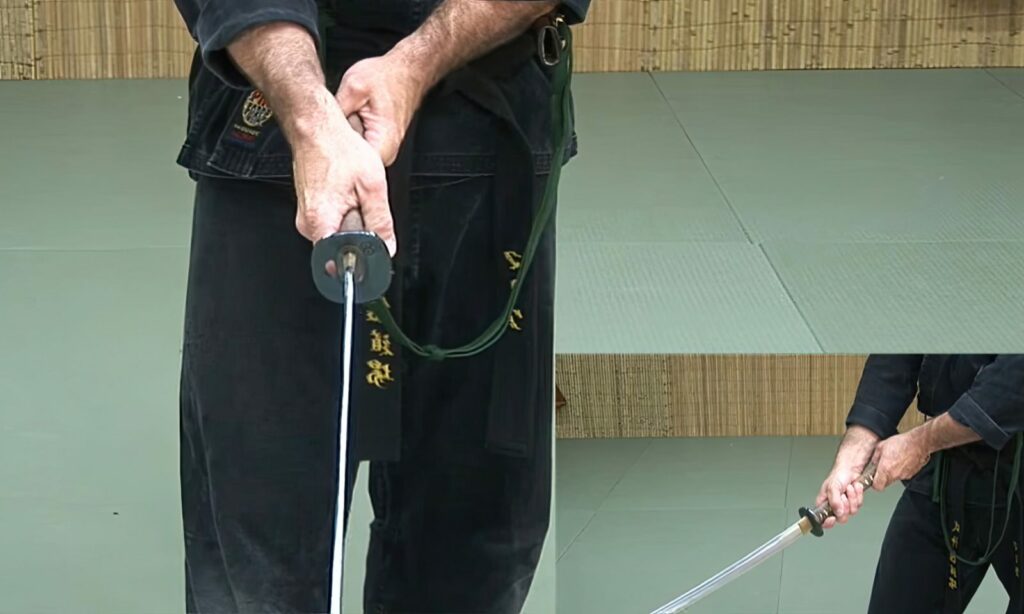
You must use both hands when holding the Katana and place them inwards or squeeze on its handle, not the sides. You want to leave a little space between your hand and the hand guard so you don’t limit your movement. In Japanese, this motion that resembles squeezing a wet towel is called chakin-shibori.
There should also be a gap between both hands. Your top hand needs to stay firm on its location, although it can be moved for some attacks, while the left hand gives strength and power in pushing and pulling aspects.
Swinging
When swinging the Katana, your main power should come from your left hand while using the right hand to guide and control the direction of your attack or block. You can use full strength and both hands for a powerful strike.
Many swings are possible with the Samurai Sword, but you should start with simple downward straight strikes or diagonal left and right attacks. These go from the top of your right shoulder to your left hip and the opposite. Katanas are mostly used for cutting or slashing but can be used for stabbing and, if done correctly, could be deadlier than a bullet.
The most important thing to know is to keep the sharp edge toward your intended target. You can hear the blade cutting through the air if you listen carefully. Let the blade flow through a straight line, and extend your arms as much as possible to make this easy to master.
Draw Attack
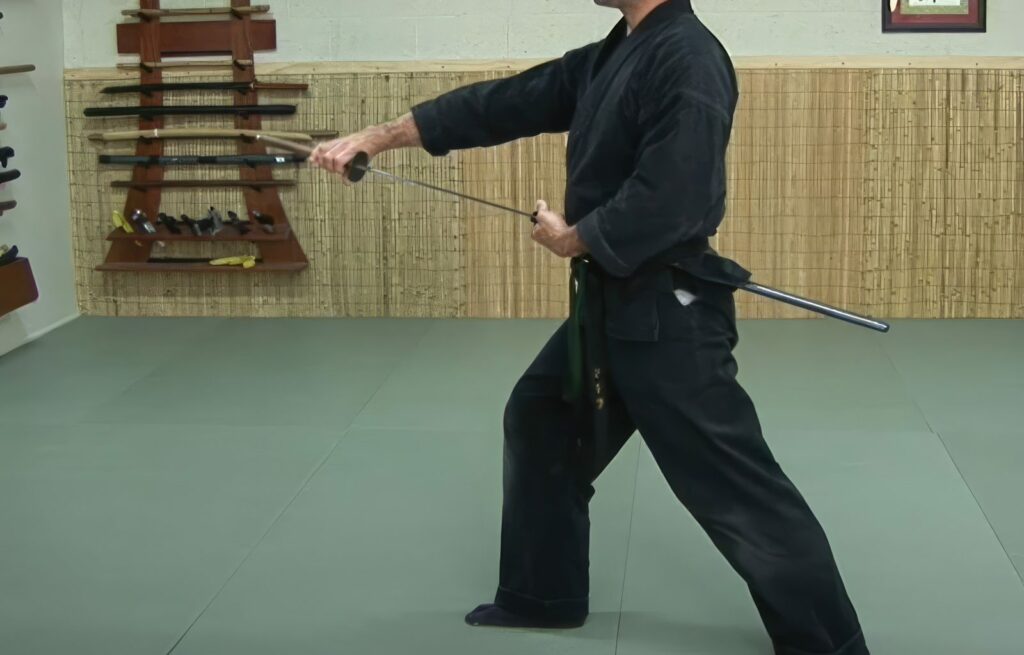
You use your left hand to break the sword’s seal, pushing the guard with your thumb. Come with your right hand, with your pinky going first at around a 3rd of the way up the handle. Step forward with your right foot to stretch your body, allowing you to attack quickly.
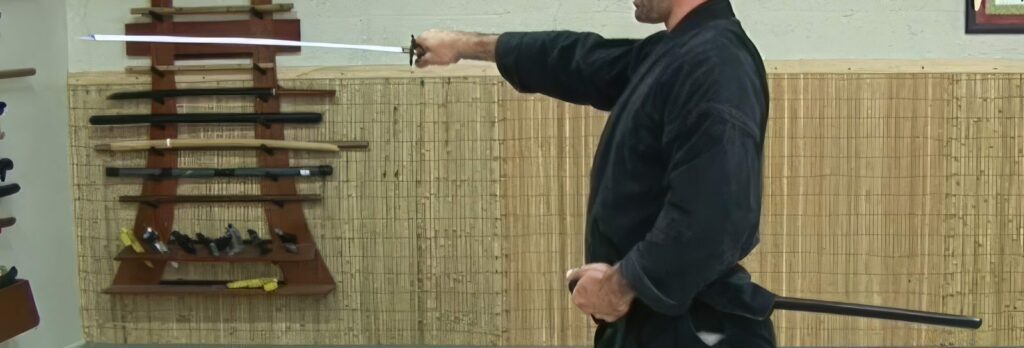
As you draw the sword with your right hand, when it’s about a 1/3rd out of its sheath, move it on its side and pull it back into the belt while at the same time drawing the handle. Extend your arm with as much power as possible and slice through your target.
Sheathing
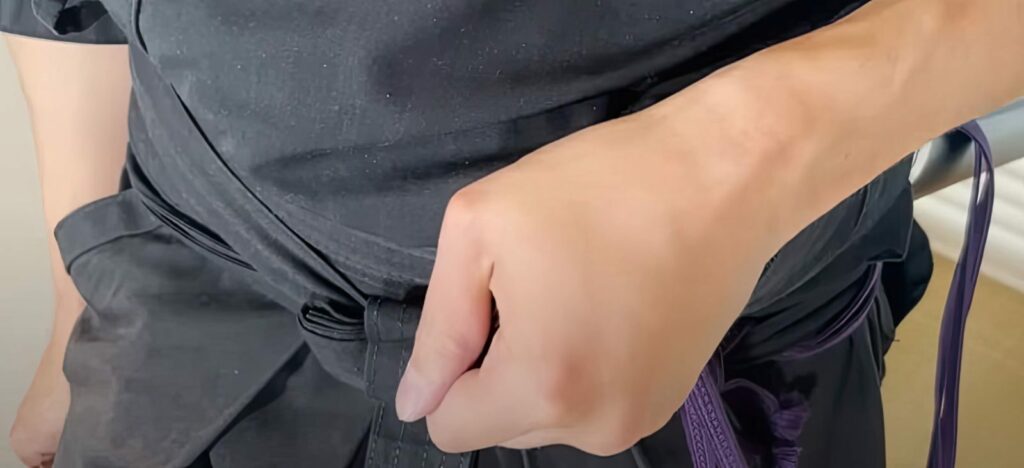
The most important thing to know when sheathing the Katana blade is that you must completely cover the scabbard’s tip with your left hand. This is very important because this hand will serve as a rail for the blade as you guide it toward the sheath’s opening.

Place the unsharpened part of the Katana blade or mune on your hand and move it across until you feel the blade’s tip or kissaki touching the entrance or opening of the scabbard. This can be challenging for beginners, but it will feel completely natural after some training.
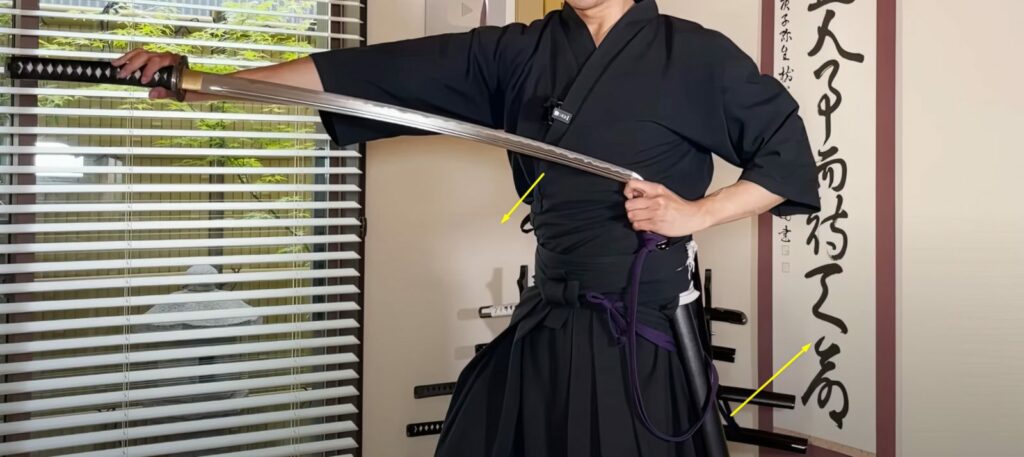
When you finally feel the blade’s tip touch the scabbard, you will want to position the Katana and the scabbard in almost the same line using both hands. Make sure to do this slowly so you won’t injure yourself first.
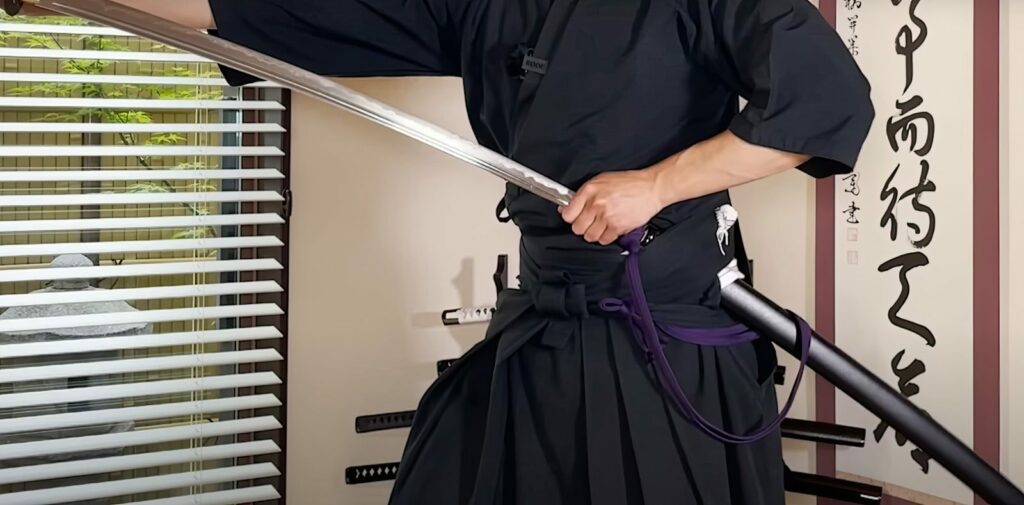
When they are in one line, and you feel the tip entering the scabbard, give the handle of the Katana a very slight push and let it enter. You must control the scabbard with your left hand so that the line will stay consistant. If it doesn’t, you’ll hear a clunky sound when sheathing, called Saya-Nari in Japanese.
How Long does it take to Master the Katana?
Mastering the Katana sword isn’t easy; as some sensei would say, it takes a lifetime because perfecting it is almost unachievable. You can learn to use the Katana by yourself, but it will take time and you can expect to be an expert in five to ten years with consistent training.
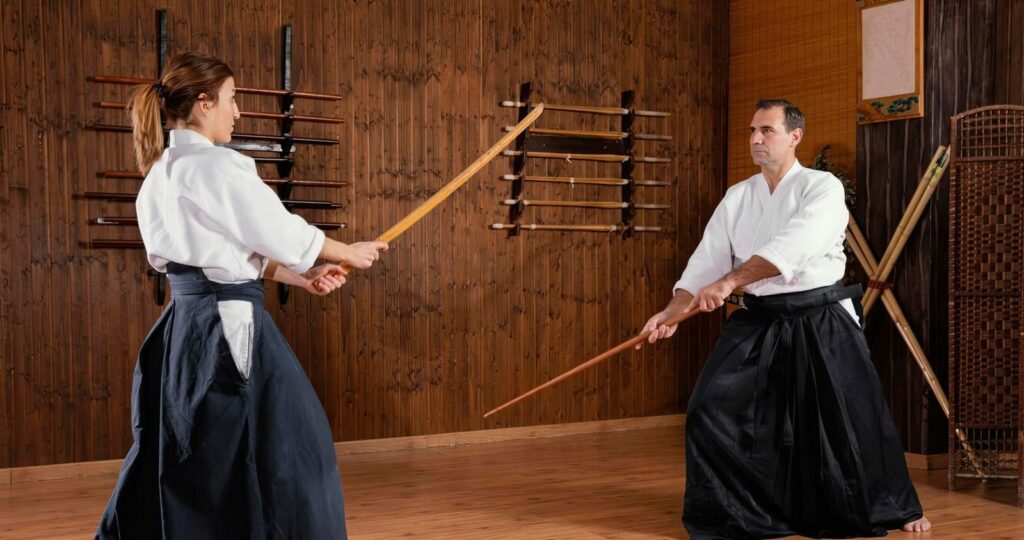
The best way to learn how to use the Katana is in any type of dojo, or training room. You can buy yourself a bokken, iaito or bamboo sword to train during your swordsmanship to be safe while you practice sword fighting and sparring. Here are some helpful things to consider in your endeavor to master the Katana:
- Training School – many sword arts utilize the Katana. Here are some to consider:
- Private Teacher – a qualified swordsman
- Cutting Objects – tatami mats or tameshigiri to practice your Katana swings on
- Don’t Give Up – Samurai started training at the age of 3 to master the Katana faster. Don’t give up. Stay patient, and keep practicing.


